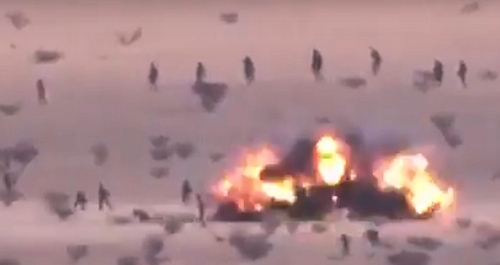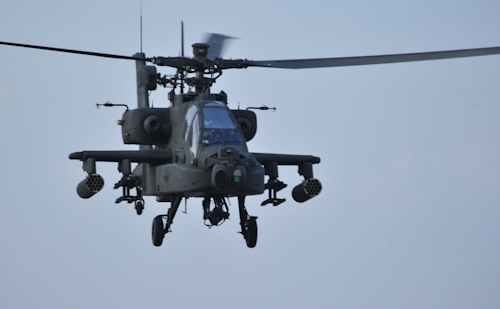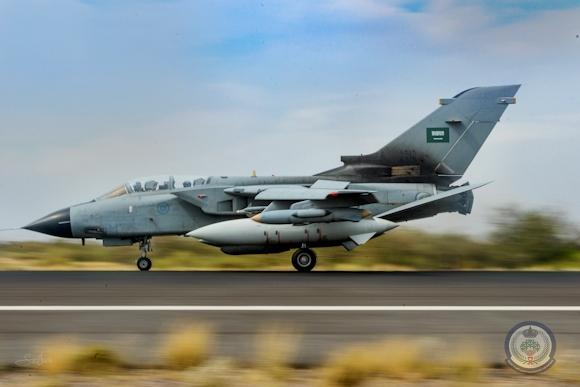The conflict in Yemen broke out in the 2014, as a consequence of the so-called Arab Spring, and already the following year saw the beginning of the international intervention.
It seems right to stress the strategic role of Yemen in the Persian Gulf region, as it controls the northern shore of the Gulf of Aden and one of the sides of the very important Bab-el-Mandeb strait, plus an extended coastal stretch washed by the Red Sea, the which constitutes a fundamental trade route for Europe. With the installation on the coast of anti-ship missiles, or simply with pieces of artillery, it would be possible to threaten this strategic route.
What amazes is the silence of the press, preferring to focus on the production of bombs for Saudi Arabian airplanes in Sardinia, as if the proliferation of weapons were caused by Italy. In reality, large quantities of armaments come from the Russian Federation, from Iran (with its 190 Unit, specialized in the supply of weapons) but also from North Korea.
The conflict in Yemen is part of the millennial Shiite and Sunni political-religious conflict. Iran has launched various operations in Sunni majority countries. In response to these attacks, the Sunni monarchies and their allies reacted by intervening in various countries and clashing openly in Yemen. Right here, one of the actors is al-Qaeda, of Sunni inspiration but an enemy of the monarchies.

The current situation has changed since the early stages of the conflict. On the one hand, we have a group led by the Shiite Houthi tribes, heavily supported by Iran, fighting, on the other side, against the Sunni component, supported by many countries, starting with Saudi Arabia and the Arab Emirates; all this while the United States continues to hit the jihadist cells that are very active in the country.
Initially, the Houthi forces seemed to have the upper hand, since they managed to occupy the capital Sana'a. Subsequently, the international intervention reversed the situation, despite the houthi - supplied by the Iranians also ballistic missiles - offered a fierce resistance, exploiting the mountainous orography of Yemen.
For some months President Hadi's government forces have improved their positions along the southern coast of the Red Sea, occupying Mokka. In addition, to stop the flow of supplies - which arrive through containers released into the sea by the Iranians and towed under the coast with various vessels - it was taken the large port of Hoddeida as well as extensive coastal areas.
 The final attack on the Houthi positions started last 16 June, also supported by the air (with AH-64D APACHE attack helicopters and fixed wing aircraft) and by the sea, from which even supplies arrived, departed from the Eritrean port of Assab. The offensive was facilitated by the fact that along the coast there is a flat area that favors the use of armored and armored vehicles. The houthi, after a strong resistance, were forced to give up ground, suffering heavy losses. The government and their allies have been able to take advantage of the possibility offered by the naval unloading units for the transportation of supplies, which are indispensable for fueling the offensive. Arrived near the airport of Hoddeida, Hadi's forces opened fire with long-range artillery (also using the South African self-propelled G-6 from 155 / 52 mm). Hoddeida is a large center and the Houthi militiamen have prevented the evacuation of the civilian population, so as to use them as human shields, a practice widespread in the region. We have not yet reached a clash in Hoddeida, as we are looking for the road to negotiation, a channel that in the Middle East is never set aside, even in the most cruel moments of conflict.
The final attack on the Houthi positions started last 16 June, also supported by the air (with AH-64D APACHE attack helicopters and fixed wing aircraft) and by the sea, from which even supplies arrived, departed from the Eritrean port of Assab. The offensive was facilitated by the fact that along the coast there is a flat area that favors the use of armored and armored vehicles. The houthi, after a strong resistance, were forced to give up ground, suffering heavy losses. The government and their allies have been able to take advantage of the possibility offered by the naval unloading units for the transportation of supplies, which are indispensable for fueling the offensive. Arrived near the airport of Hoddeida, Hadi's forces opened fire with long-range artillery (also using the South African self-propelled G-6 from 155 / 52 mm). Hoddeida is a large center and the Houthi militiamen have prevented the evacuation of the civilian population, so as to use them as human shields, a practice widespread in the region. We have not yet reached a clash in Hoddeida, as we are looking for the road to negotiation, a channel that in the Middle East is never set aside, even in the most cruel moments of conflict.
From a technical point of view, this is the first campaign in which the Arab monarchies found themselves fighting a challenging conflict on their own. In the initial phase it was thought to provide resources to the forces of President Hadi however, in the 2015, given the unfavorable trend of the operations and the Iranian interference, it was decided to form a coalition, very broad1 to deal with the conflict, trying to keep losses to a minimum. The majority Houthi areas, mostly mountainous in nature, proved to be a tough bone, also in consideration of Iran's constant supply of armaments and specialized personnel (the Saudi territory was hit by several missiles launched by the Houthi) . With the recent great offensive on Hoddeida, the coastal stretch to be controlled has greatly reduced and probably the naval blockade, in anti-Iranian function, will become more effective. Probably an agreement will be reached between the warring parties or soon there will be an exponential increase in guerrilla activities.
1 The Saudi-led international coalition in Yemen, which supports President Haidj, sees the participation of the following countries: the Arab Emirates, Barhein, Kuwait, Jordan, Egypt, Sudan, Morocco. Furthermore, the presence of French special forces, in particular for the laser designation of the targets, was reported.
(photo: RSAF / YouTube / RSLF)












